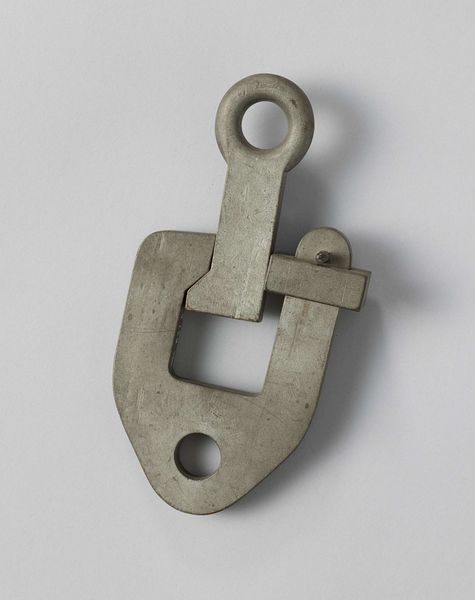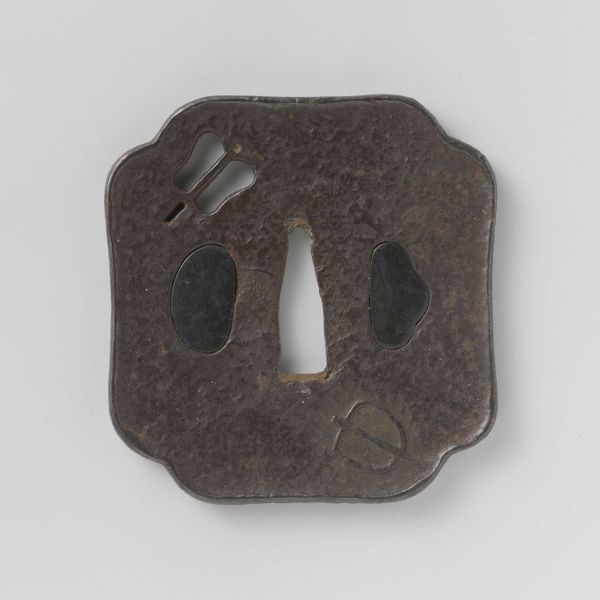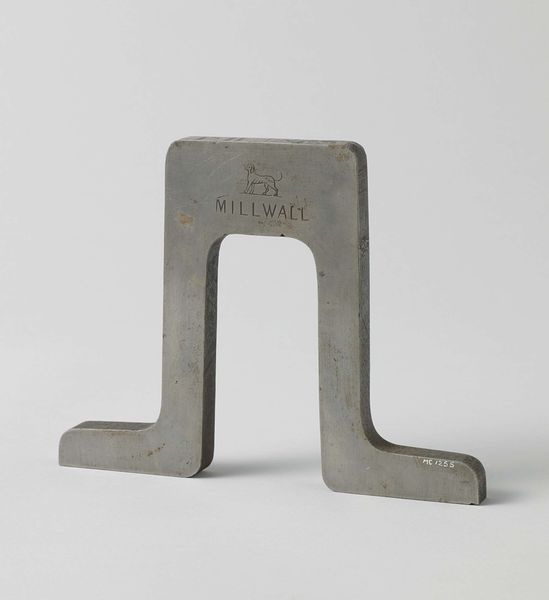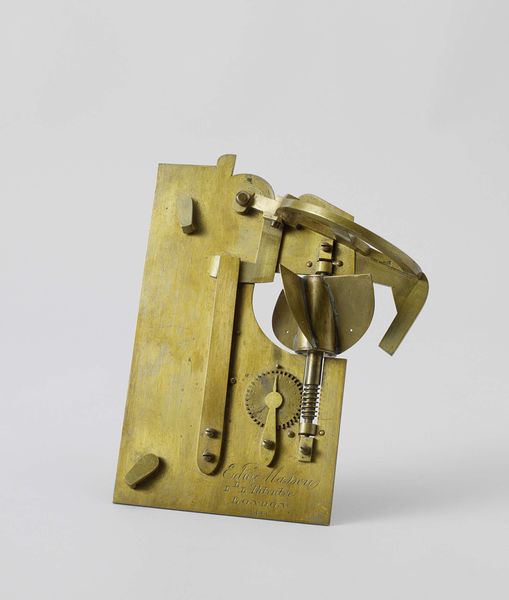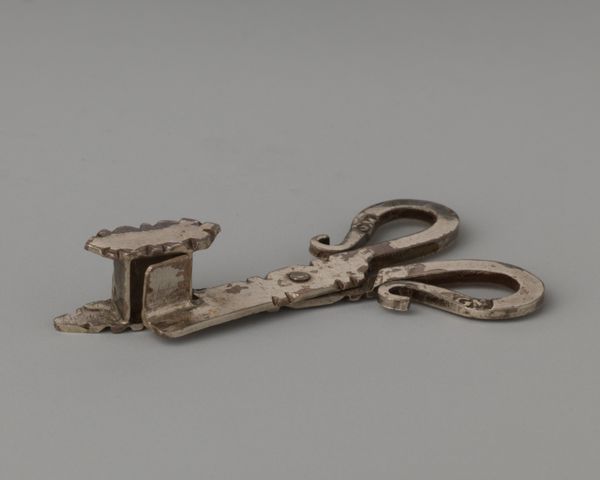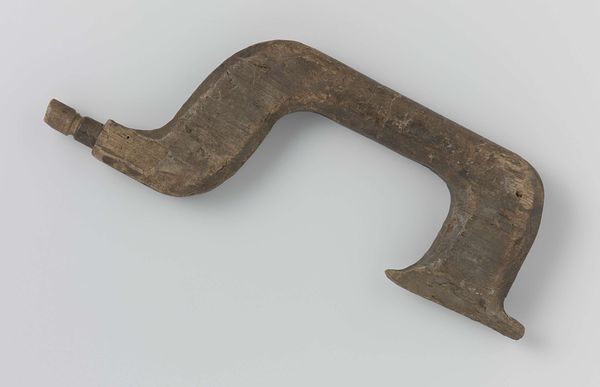
metal, found-object, sculpture
#
metal
#
found-object
#
form
#
geometric
#
sculpture
#
modernism
Dimensions: height 9 cm, diameter 3.5 cm
Copyright: Rijks Museum: Open Domain
Curator: Let's turn our attention to this interesting metal piece, titled "Model of a Slip Hook for Lifeboats," made in 1857 by Petrus van der Loo. Editor: My initial feeling? Utilitarian yet strangely elegant. The gray metal, the geometric shapes...it's almost brutalist. It's hard to believe this was fabricated in the mid-19th century. Curator: Indeed. It presents us with a stark form. Consider what it signifies—the inherent trust placed on such a small object. That hook held the weight of human lives dangling above often tempestuous seas. A single point of potential failure that promised collective salvation. Editor: And let’s talk about that “trust." Metal fatigue, rust, sheer production quality… these were all factors that people literally entrusted their lives to. Was the metal properly cast? Was there adequate oversight? Every stage involved labor, resources, and a whole chain of potential failures. Curator: Absolutely, this object embodies layers of cultural expectation and, perhaps, societal anxiety surrounding progress and technology. One flawed point threatened absolute disaster—recalling the anxieties from this age of emerging technologies. The square and circular forms suggest a rigid industrial design softened by an imperfect materiality, all implying larger concepts such as precarious security, safety through faith in mechanics, deliverance via technology. Editor: I am thinking more literally. Someone designed the mould. Others extracted the metal. Someone probably got burned smelting it! From design to casting to finishing, the artist’s process here is completely inextricable from the social history that makes this thing meaningful in the first place. Look closer, and I am thinking you’ll discover the marks from the various stages of creation – decisions made, mistakes made – and find not deliverance but process. Curator: Well, looking at it through your materialist lens offers a completely new perspective! It adds depth to the already existing psychological burden this object suggests for a modern audience. Editor: Right! Well, on that note, I believe this examination demonstrates how everyday industrial creations can be just as illuminating as paintings hung in a Salon.
Comments
No comments
Be the first to comment and join the conversation on the ultimate creative platform.
